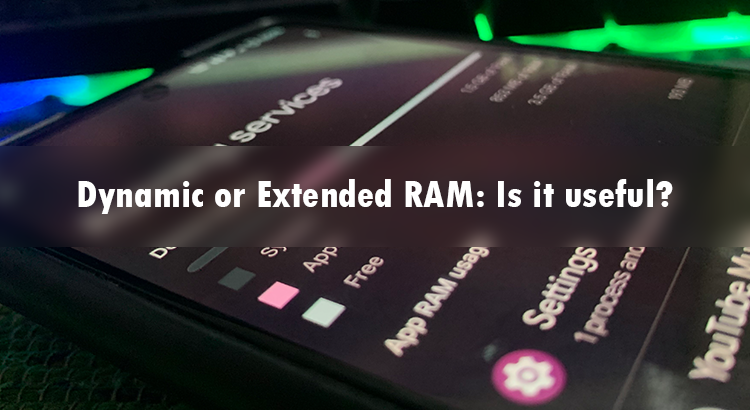Dynamic RAM or extended RAM is the new fade among Android smartphone brands. These days, companies are branding their smartphone’s RAM specs like 8 GB + 3 GB, showing that the phone can have extra amount of RAM. So, what exactly is this extended RAM and is it really useful?
RAM is one of the most essential parts of the smartphone because it keeps all the important data your phone is required to run as well as the apps and data you’re opening. The data is loaded into RAM because it’s extremely fast memory, which means you won’t have to wait much while switching between apps or using your phone normally.
Dynamic or Extended RAM on the other hand actually uses some part of your Internal storage as additional RAM. It cannot be called RAM though because your internal storage isn’t as fast as your phone’s RAM. However, it acts the same way. It holds the apps in its memory when you have loaded too many apps for your RAM to handle. So, it does act like RAM.
Still, how useful is Dynamic or Extended RAM for you?
You do know that it actually acts as your phone’s RAM and holds the apps when your phone isn’t having enough free RAM available to hold more apps. So, you can access the apps faster and don’t have to load apps every time you open them from app switcher. However, the question arises, is dynamic or extended RAM really useful or it is useless?
Well, for the most part, it totally depends.
Performance due to Dynamic / Extended RAM:

There is no gain of performance due to this. So, don’t think that it will magically make your smartphone perform great. It can have slight impact on performance due to several reasons though.
You might actually find it useful if you have tons of useless apps in background for no reasons and have no space for another app to open. In that case, instead of closing the last used apps, it will simply open the new app in the virtual RAM (or say dynamic / extended RAM). Hence, the app opening timing would be noticeably faster.
In another case, if you got big apps in background and not having enough memory for another app but you want to open a heavy graphics game alongside them. It could actually lead to longer waiting times to load the game and access it every time you switch between apps. That’s because the dynamic RAM is created by your internal storage which is either eMMC or UFS and none of them are as fast as the real RAM.
Don’t expect your games’ performance or FPS to increase though. Gaming experience will stay the same. It might instead increase the load times if your phone is using the dynamic or extended RAM for it.
Multi-tasking:

Well, that’s the main advantage of having dynamic RAM. You will be able to load a lot more apps in background and switch seamlessly between them, without having to wait for apps to reload.
Yeah, that’s where it actually helps.
Your multitasking experience should improve when it’s enabled. However, remember, it won’t be as seamless as the actual RAM.
One more thing you should keep in mind is that… Your phone’s software might still kill apps in background. Most phones’ software (OS) is designed such a way that apps will be killed in background if they are not opened for long or if you don’t access them much, to save battery. Your phone usually learns over time and can act differently after some days. Still, many of the custom UI like MIUI and Oxygen OS will still kill apps in background for no reason.
So, even with a lot of free RAM available (not even the dynamic RAM), your multitasking experience could be disastrous due to your phone’s software.
Storage speed and life:

Android phones are mostly coming with UFS memory these days while the cheaper models still come with eMMC memory.
As I mentioned above, your phone’s internal storage is slower compared to the actual RAM. And while UFS is quite fast, eMMC is extremely slow compared to even UFS. Besides that, with use, the life of your phone’s internal storage also slowly reduces. UFS have better life than eMMC though, so it might not have huge impact on UFS.
However, if you got a low-end device and thinking to make great use of extended ROM on your device which got eMMC storage, then you’re only going to make your experience worse.
While the eMMC storage is slow, so it will make your experience slower too. It also has lower life cycle compared to UFS. So, it will get slower much faster if you use it for such tasks.
Besides these, some smartphone brands are known to use cheap eMMC on their lower end phones. These phones’ storage get slower fairly quickly and might even die. Hence, I don’t recommend you to use it if your phone got eMMC memory and especially if it is really low-cost one.
Conclusion:
So, that’s it. I hope you were able to know how useful or useless dynamic or extended memory could be for your phone. Smartphone brands loves to stick with things like these which looks great on paper. Such as how the 108 MP camera of many phones used to get beaten by 12 MP camera from Samsung and Apple.
It is also quite buggy for some smartphones. So, if you really want to use it, make sure that it is actually being useful for your usage and not causing issues.


